Zurück zur Übersicht
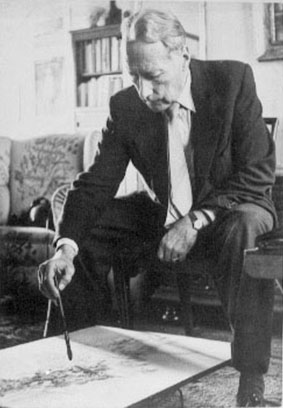 Rudolf de Bruyn Ouboter, painter of water colours, was once described by his friend and contemporary fellow-painter Kees Verwey as "the prince of water colour painters." A qualification that speaks for itself.
Rudolf de Bruyn Ouboter, painter of water colours, was once described by his friend and contemporary fellow-painter Kees Verwey as "the prince of water colour painters." A qualification that speaks for itself.
De Bruyn Ouboter was born on 7 July, 1894 in Hulst, in the very south of The Netherlands. In The Hague, where his parents moved a couple of years later, the painter Bernard Schregel became his teacher. In The Hague he also studied at the drawing school of Bik and Vaandrager and followed evening classes of model drawing at Pulchri Studio. In 1922 he set out to M?, where he studied with the German painter Walter Thor. Two years later he married Margot Mazel, with whom he moved to Paris. There he studied at the Acad?e de La Grande Chaumi?. Subsequently the young couple spent a year in Florence where they lived in the villa of the Dutch artist Van der Velde. However, as a painter De Bruyn Ouboter did not feel at home with the bright southern light, the Dutch skies and atmosphere had a greater attraction for him and in May 1926 Rudolf and Margot returned to Holland. There De Bruyn Ouboter continued to take lessons at the Hague Academy.
In 1931 he made an important discovery: he made a composition of a small orange tree and a pewter plate with ? water colour. The result was so convincing that it seemed impossible to return to oil and canvas.
De Bruyn Ouboter has dedicated the rest of his life to the aquarelle. The transparent lightness with which he represents his subjects is characteristic of his work. For the most part he chose his subjects from what was, both literally and metaphorically, close at hand. Objects in and around the house, such as flowers, glassware, his mother's dolls, an antique chest of drawers. But he also painted what his son or friends brought home from the beach or from trips further afield. His work also includes various portraits of his wife, children and some good friends.
In his entire work light plays a predominant role. His paintings often seem to have been painted in the same light-hearted manner that characterizes the final result. The contrary is true. De Bruyn Ouboter has always worked under a considerable strain, himself always doubtful about the result. He once said: "Why I ever began doing it, I still cannot understand, but I just had to do it."
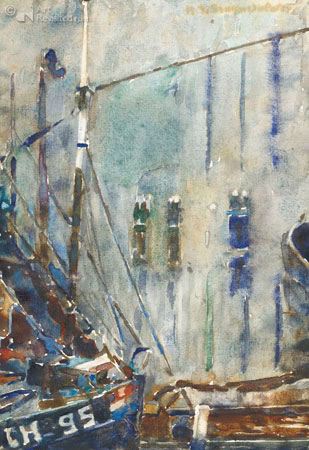
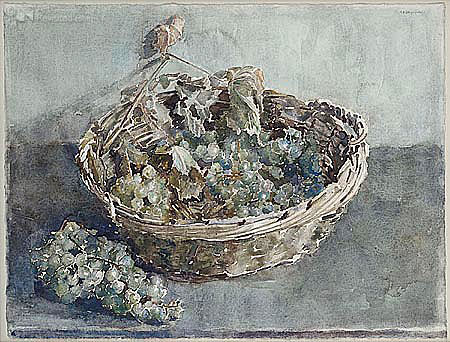
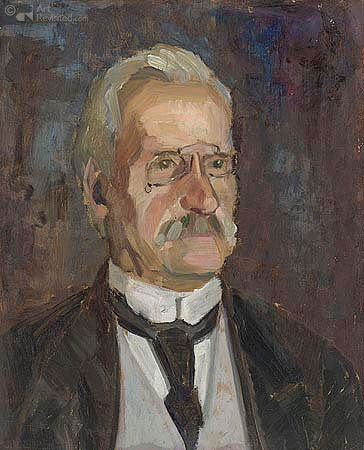
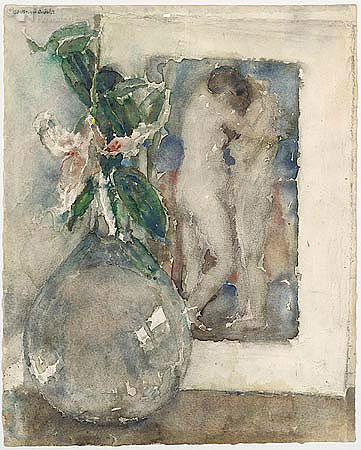
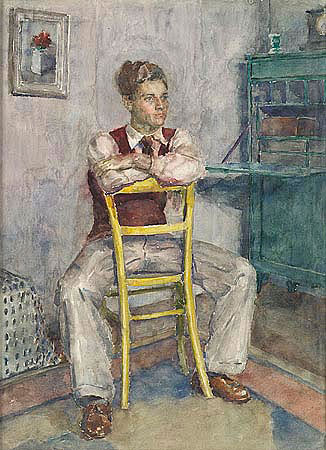
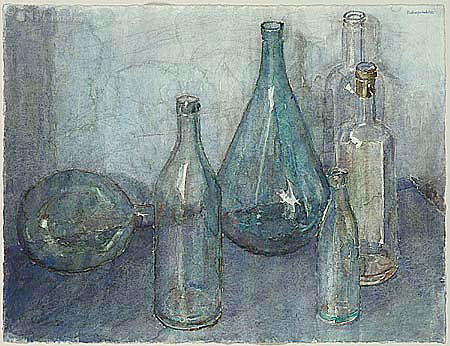
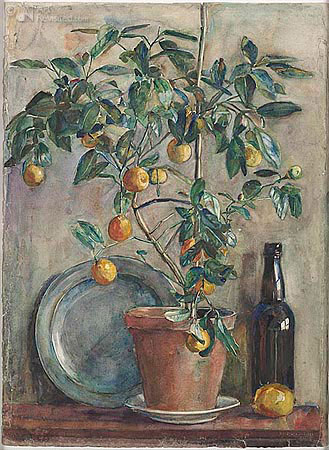
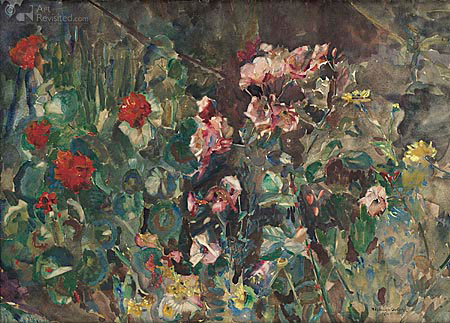
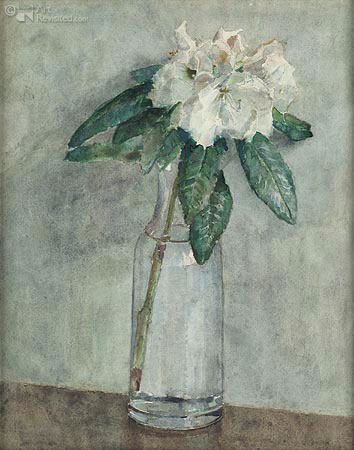
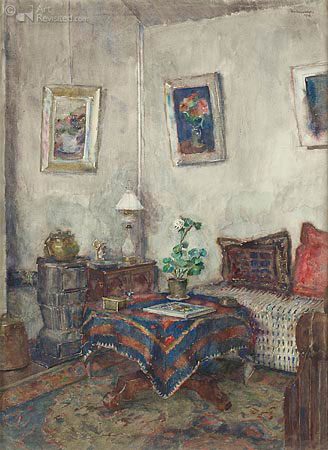
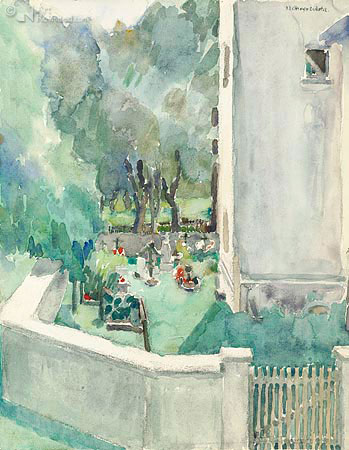
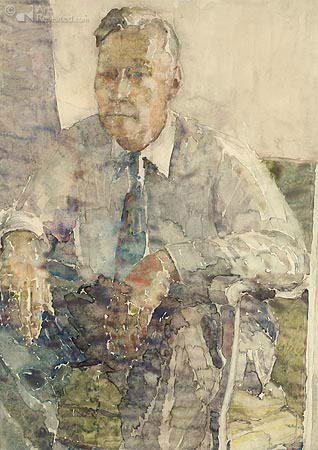
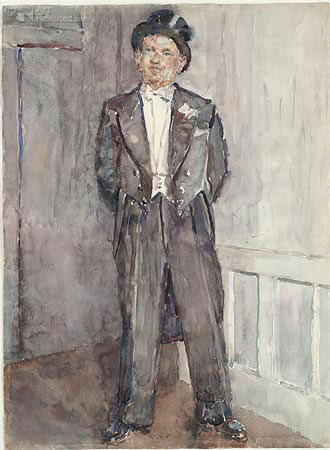
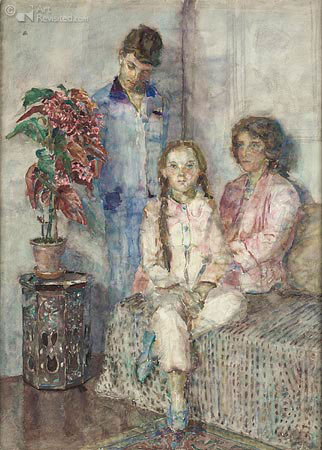
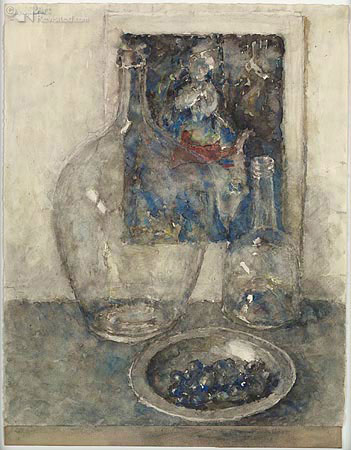
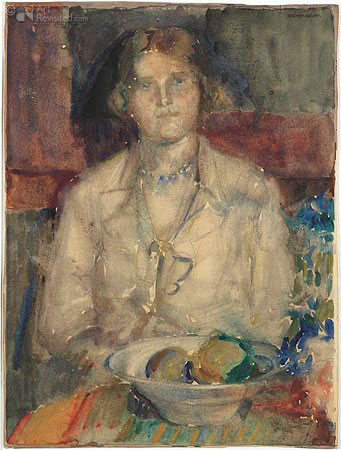
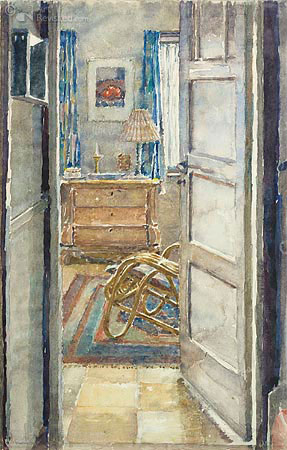
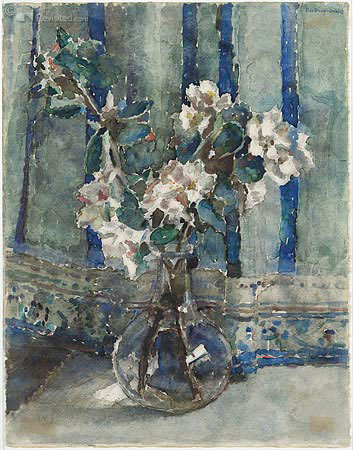
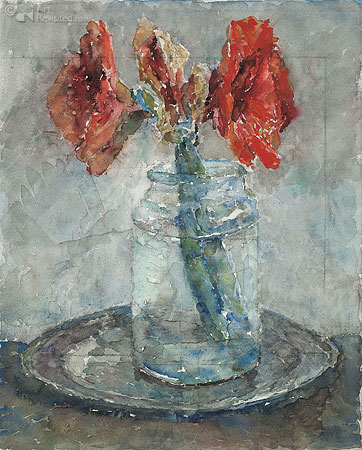
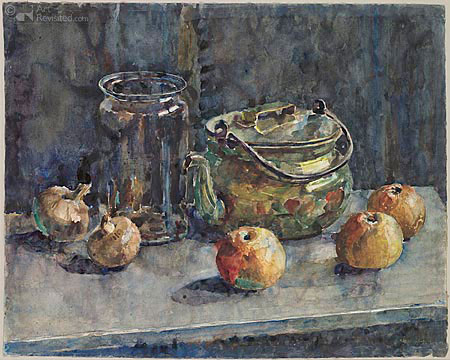
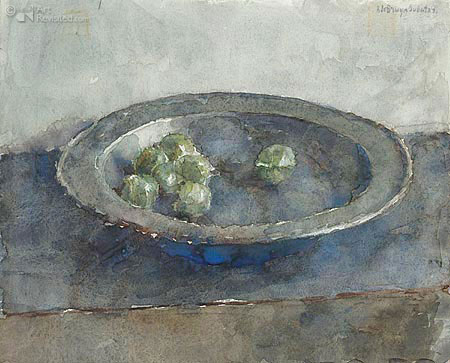
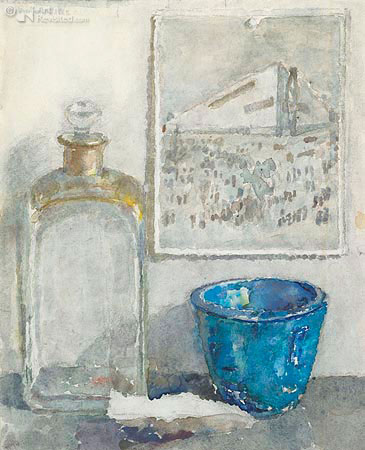
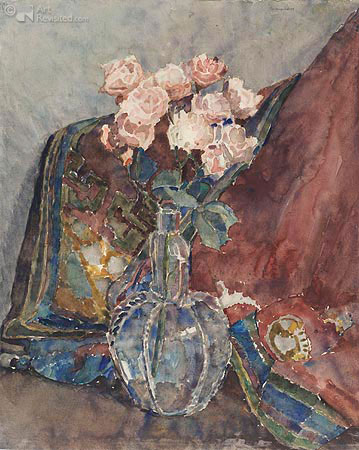
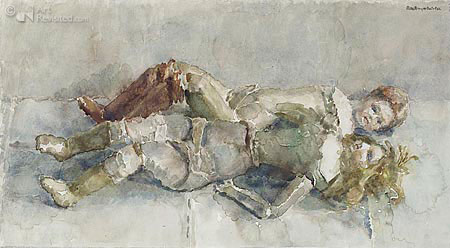

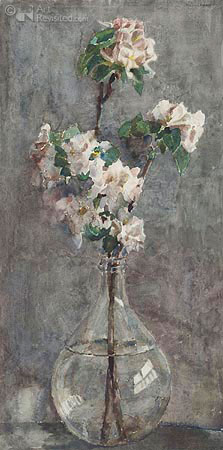
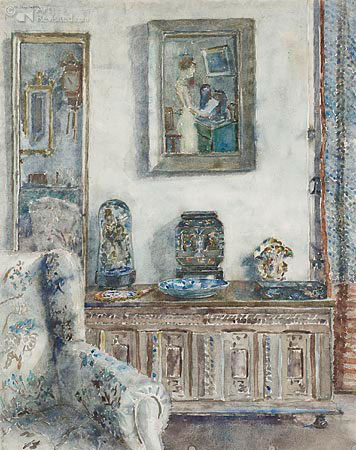
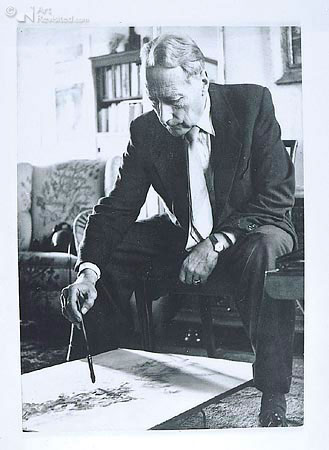
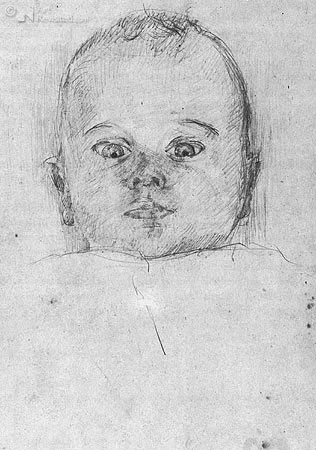
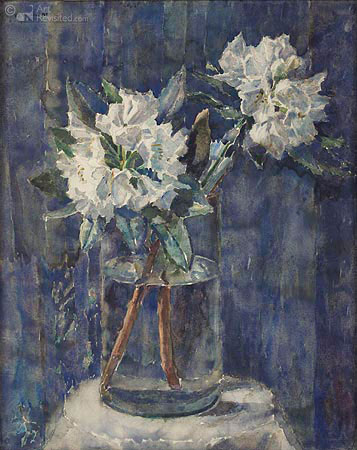
Rudolf de Bruyn Ouboter
 Rudolf de Bruyn Ouboter, painter of water colours, was once described by his friend and contemporary fellow-painter Kees Verwey as "the prince of water colour painters." A qualification that speaks for itself.
Rudolf de Bruyn Ouboter, painter of water colours, was once described by his friend and contemporary fellow-painter Kees Verwey as "the prince of water colour painters." A qualification that speaks for itself. De Bruyn Ouboter was born on 7 July, 1894 in Hulst, in the very south of The Netherlands. In The Hague, where his parents moved a couple of years later, the painter Bernard Schregel became his teacher. In The Hague he also studied at the drawing school of Bik and Vaandrager and followed evening classes of model drawing at Pulchri Studio. In 1922 he set out to M?, where he studied with the German painter Walter Thor. Two years later he married Margot Mazel, with whom he moved to Paris. There he studied at the Acad?e de La Grande Chaumi?. Subsequently the young couple spent a year in Florence where they lived in the villa of the Dutch artist Van der Velde. However, as a painter De Bruyn Ouboter did not feel at home with the bright southern light, the Dutch skies and atmosphere had a greater attraction for him and in May 1926 Rudolf and Margot returned to Holland. There De Bruyn Ouboter continued to take lessons at the Hague Academy.
In 1931 he made an important discovery: he made a composition of a small orange tree and a pewter plate with ? water colour. The result was so convincing that it seemed impossible to return to oil and canvas.
De Bruyn Ouboter has dedicated the rest of his life to the aquarelle. The transparent lightness with which he represents his subjects is characteristic of his work. For the most part he chose his subjects from what was, both literally and metaphorically, close at hand. Objects in and around the house, such as flowers, glassware, his mother's dolls, an antique chest of drawers. But he also painted what his son or friends brought home from the beach or from trips further afield. His work also includes various portraits of his wife, children and some good friends.
In his entire work light plays a predominant role. His paintings often seem to have been painted in the same light-hearted manner that characterizes the final result. The contrary is true. De Bruyn Ouboter has always worked under a considerable strain, himself always doubtful about the result. He once said: "Why I ever began doing it, I still cannot understand, but I just had to do it."
Webseite: www.debruynouboter.nl
Produkten
Kunstwerke

6793
17.5x12cm
SCH 95

6792
40x52cm
Mandje met druiven

6785
44x34cm
Vader van de schilder

6784
43x29cm
Tak in karaf voor naaktprent

6783
57x78cm
Jan

6782
40x53cm
Zes Flessen

6781
75x55cm
Sinaasappelboompje

6780
53x73cm
Bloementuin

6779
45x35cm
Witte rhododendron

6778
78x57cm
Atelier

6777
29x23cm
Uitzicht op kerkhof

6776
56x45cm
Zelfportret

6775
78x57cm
Man in rok

6774
57x79cm
Het ferin

6773
59x46cm
Stilleven

6772
60x45cm
De vrouw van de schilder

6771
57x37cm
Interieur Pauwenlaan

6770
45x35cm
Appelbloesem in glazen fles

6769
54x42cm
Red amaryllis

6768
49x61cm
Koperen ketel met fles

6747
23x28.5cm
Schaal met druiven

6746
28x23cm
De nieuwe bijenkorf in Rotterdam

6745
56x45cm
Vaas met roze rozen

6744
31x56cm
Twee poppen

6743
44x34cm
Stilleven

6742
57x29cm
Appelsloesem

6741
62x48.5cm
Interieur

6636
Foto schilder aan het werk

6635
Kindertekening

6634
60.5x48.5cm
Witte rhodondendron




